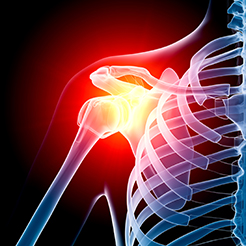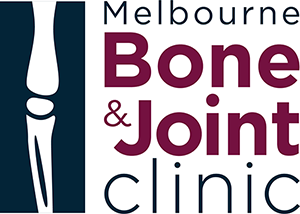- Total shoulder replacement
- Reverse total shoulder replacement
- Rotator cuff repair
- Arthroscopic stabilisation
- Subacromial decompression (acromioplasty)
TOTAL SHOULDER REPLACEMENT
Total shoulder replacement involves replacing the worn-out shoulder joint with an artificial one (prosthesis). Shoulder replacements are indicated for conditions such as osteoarthritis or rheumatoid arthritis and a shoulder replacement is indicated when other physical therapies have been inadequate in providing relief to the patient. Indications for shoulder replacement include severe shoulder pain that restricts daily activity, moderate to severe pain during rest and a weakness or loss of motion in the shoulder.
REVERSE TOTAL SHOULDER REPLACEMENT
The reverse total shoulder replacement is a complex surgical procedure allowing the patient with osteoarthritis of the shoulder and a rotator cuff tear to have a shoulder replacement. The prosthesis is inserted in reverse to our normal anatomy utilising the deltoid muscle for strength and stability rather than relying on the worn-out rotator cuff. This procedure is successful in patients with a deficient rotator cuff or patients who have had a normal total shoulder replacement who are still suffering from pain following this procedure. Our surgeons will guide you through which procedure is more suitable to you during your consultation.
ROTATOR CUFF REPAIR
The rotator cuff is a muscle that surrounds the shoulder joint and provides strength to the shoulder and the ability for the arm to lift. Over years of use or a traumatic episode the rotator cuff can tear. In some patients, this can cause significant symptoms in the shoulder and can sometimes necessitate the rotator cuff needing to be repaired. The procedure can restore strength to the shoulder and increase movement through the arm. The surgery requires intense rehabilitation with a physiotherapist in order for the patient to obtain the best results.
ARTHROSCOPIC STABILISATION
Arthroscopic shoulder stabilisation is a reconstructive procedure involving the ligaments of the shoulder where the stabilisers in the shoulder are tightened and repaired (if necessary). The procedure requires intense physiotherapy postoperatively to ensure flexibility is obtained postoperatively and the shoulder strength is maintained during the healing process.
SUBACROMIAL DECOMPRESSION (ACROMIOPLASTY)
Subacromial decompression or acromioplasty is a procedure used to treat shoulder impingement (when the bones and tendons in the shoulder rub against each other and cause pain). Using an arthroscopy, any bone spurs or tissue swelling within the subacromial space are removed in order to reduce pain and increase mobility through the shoulder joint.

